Abstract
Mechanical and electrical responses to stimulation of the vagus nerve were studied in the isolated, innervated trachea of the guinea-pig. In approximately half the preparations tested, the amplitudes of mechanical constrictor responses to stimulation of the vagus were reduced substantially during a period of sympathetic stimulation. Vagal responses were unaltered in the remainder. In single trachealis cells, stimulation of the vagus nerve or sympathetic stellate ganglion elicited depolarization and hyperpolarization, respectively. Vagally-mediated depolarization was decreased, unchanged or increased in amplitude after a period of sympathetic stimulation. Isoprenaline almost abolished mechanical responses induced by stimulation of the vagus, and this effect was blocked by propranolol. Noradrenaline attenuated markedly vagal mechanical responses also, and this effect was blocked by a combination of propranolol and phentolamine. Both noradrenaline and isoprenaline hyperpolarized single trachealis cells and greatly reduced the amplitude of vagally-mediated depolarization. Neither sympathetic stimulation nor applied catecholamines altered mechanical responses to applied acetylcholine, strongly suggesting that their effects on vagal responses are predominantly presynaptic.
Full text
PDF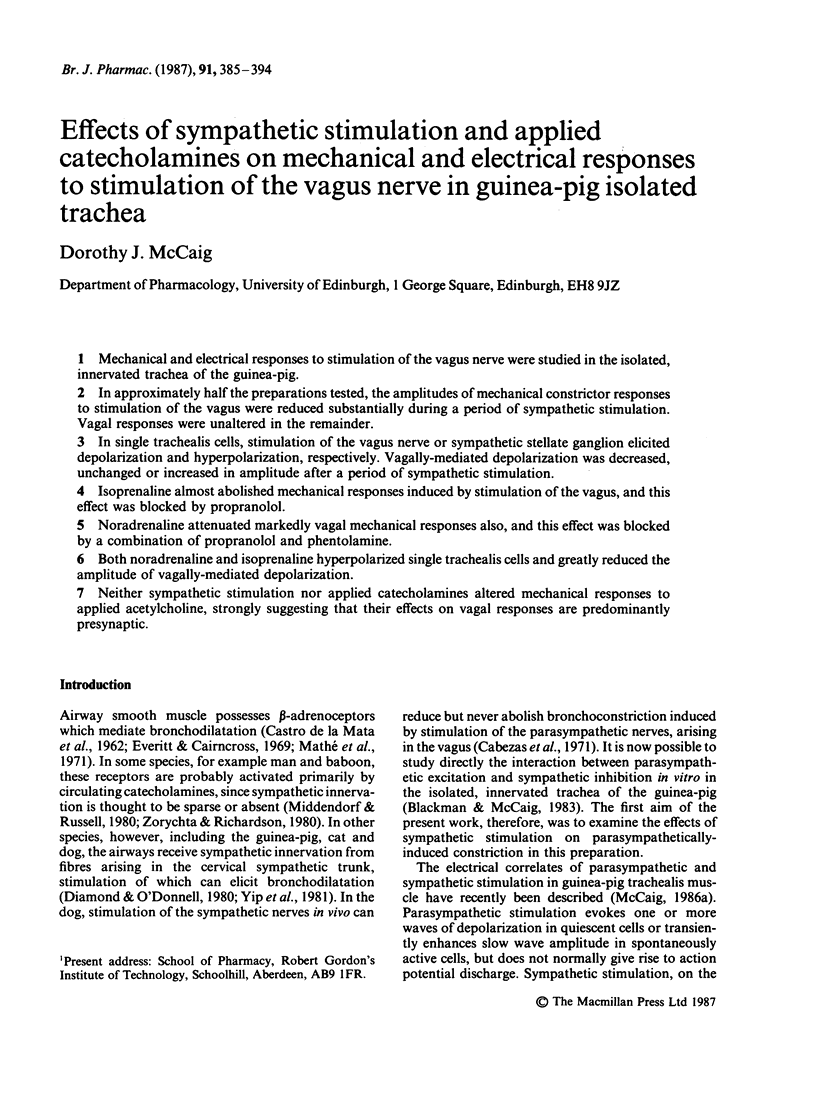
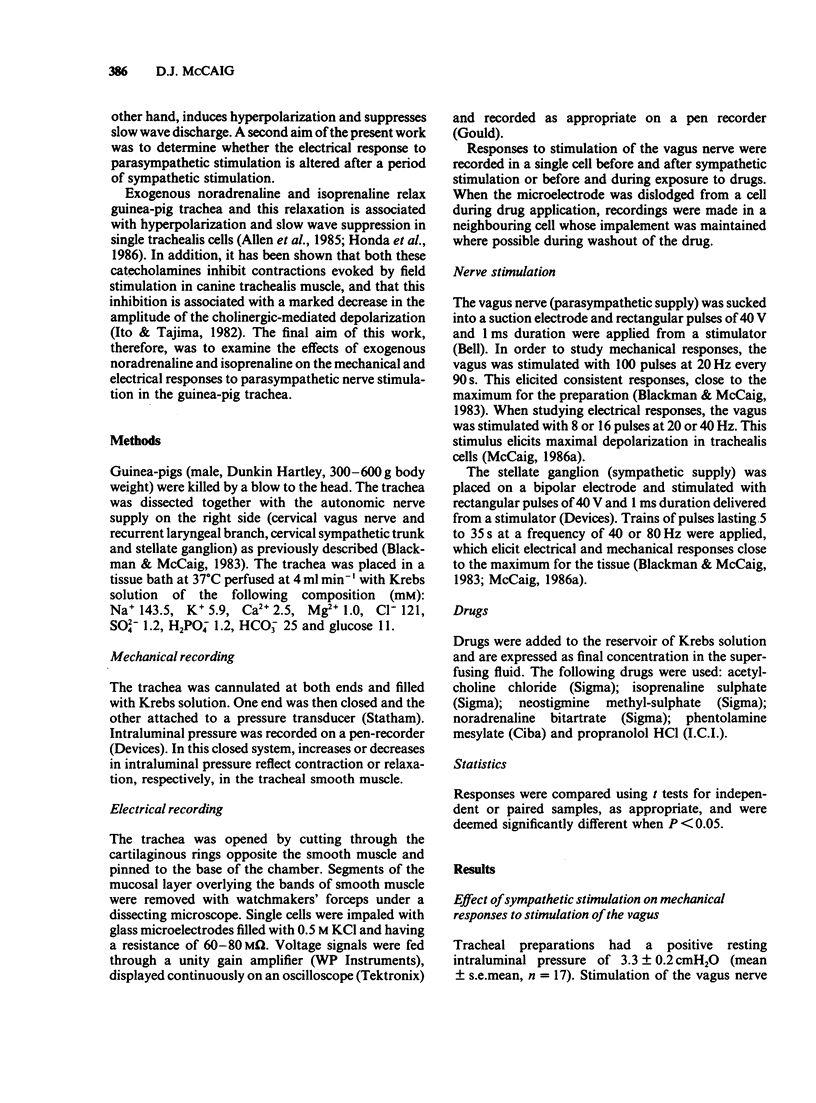
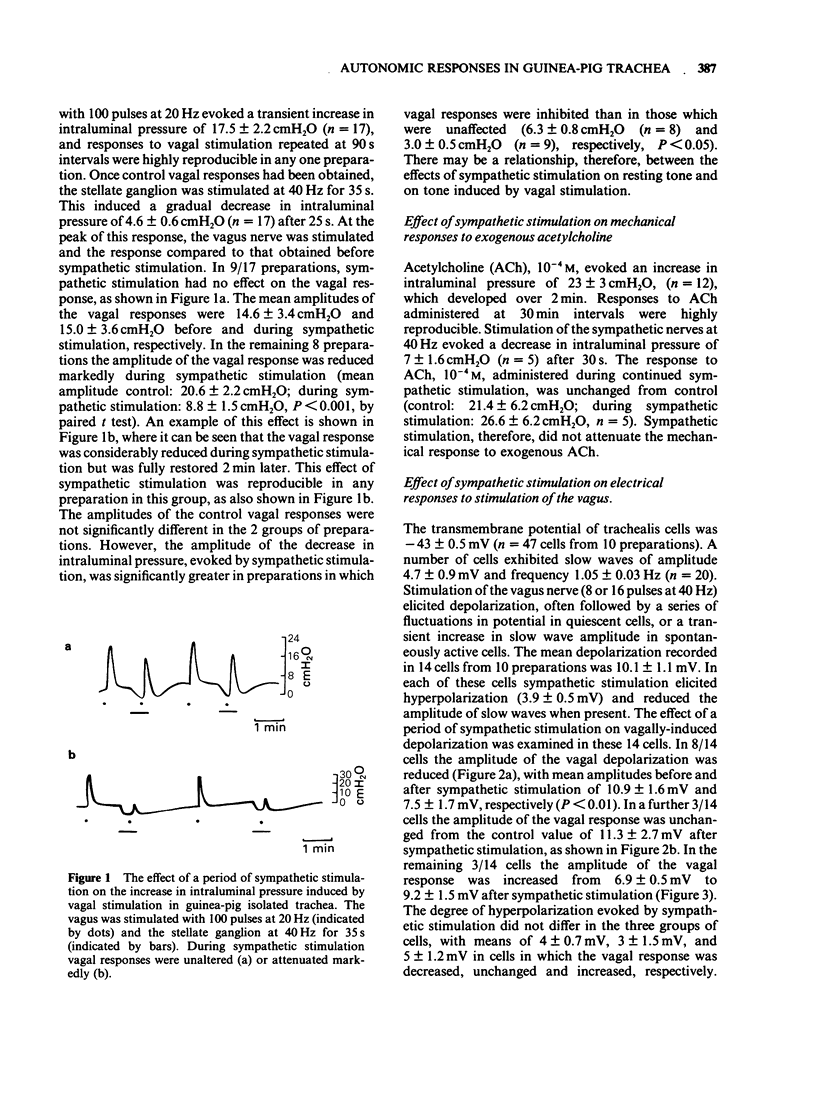
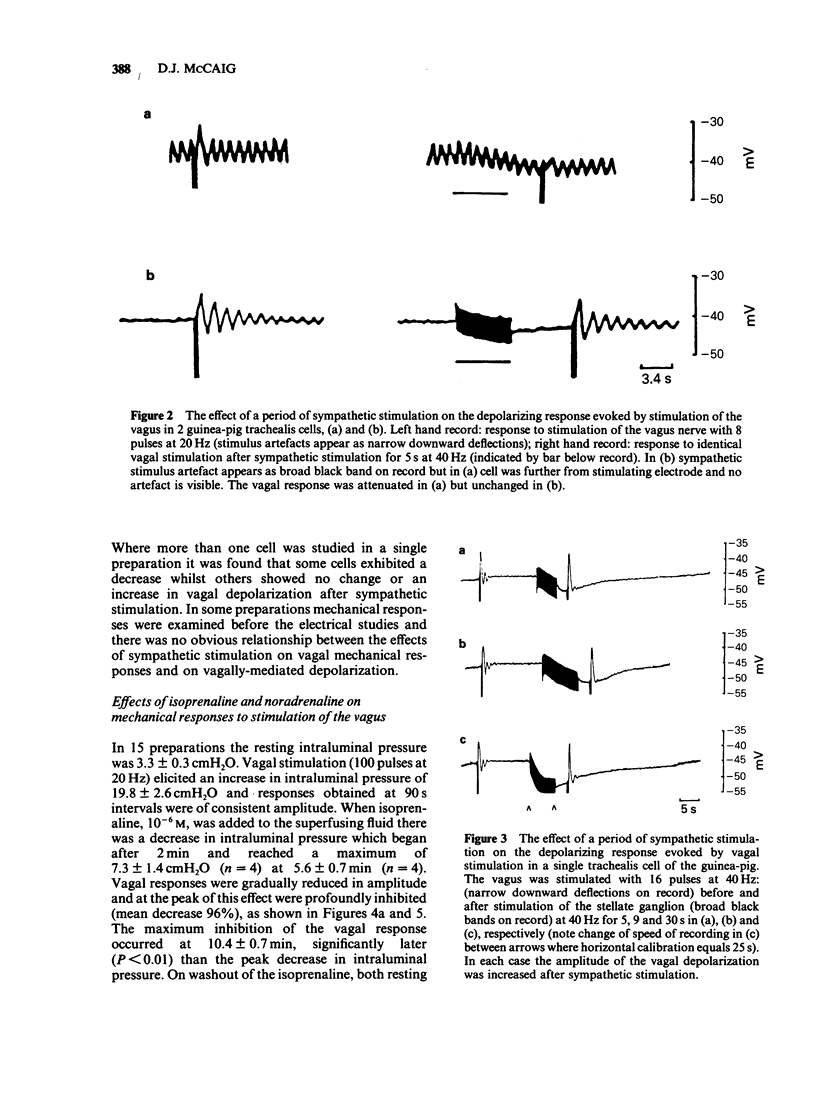
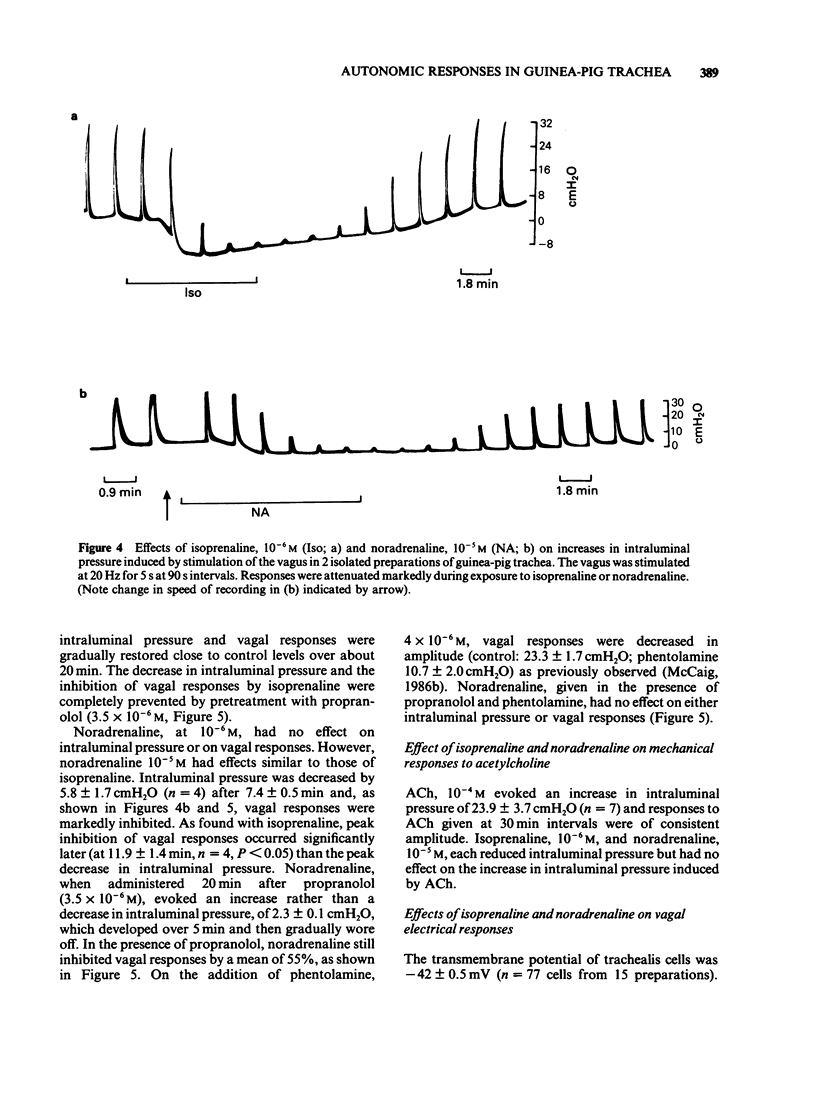
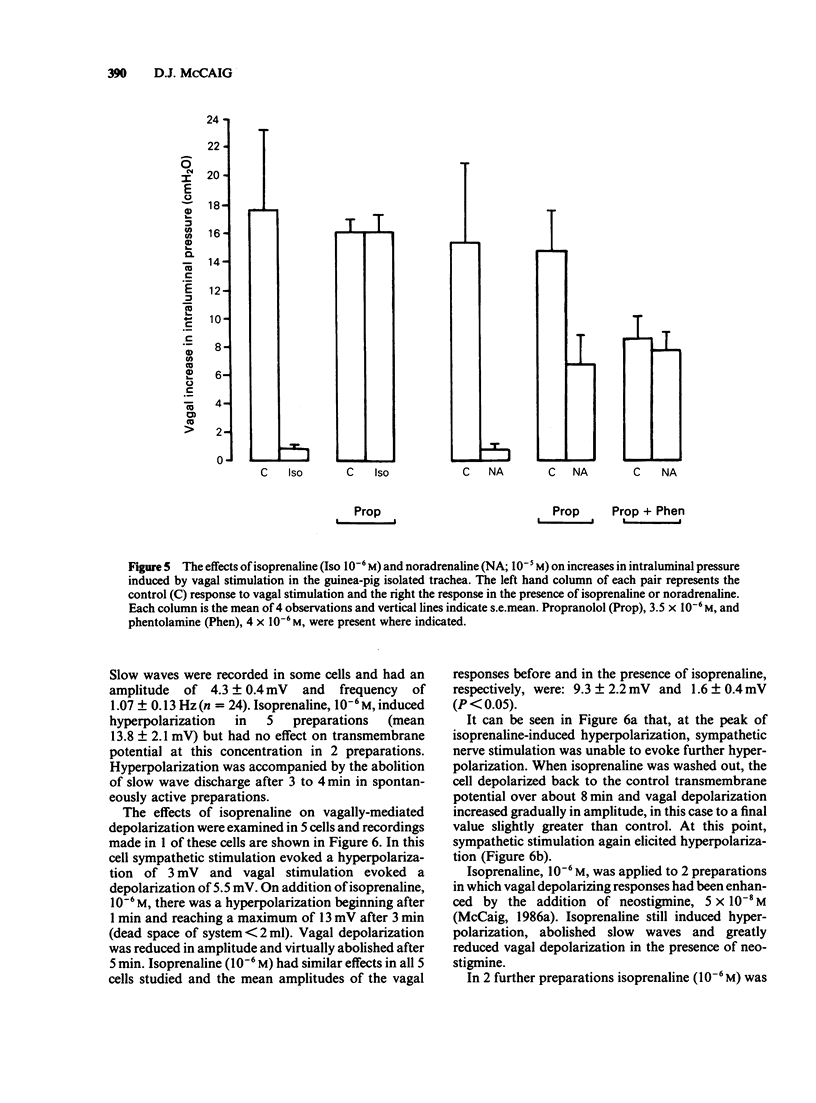
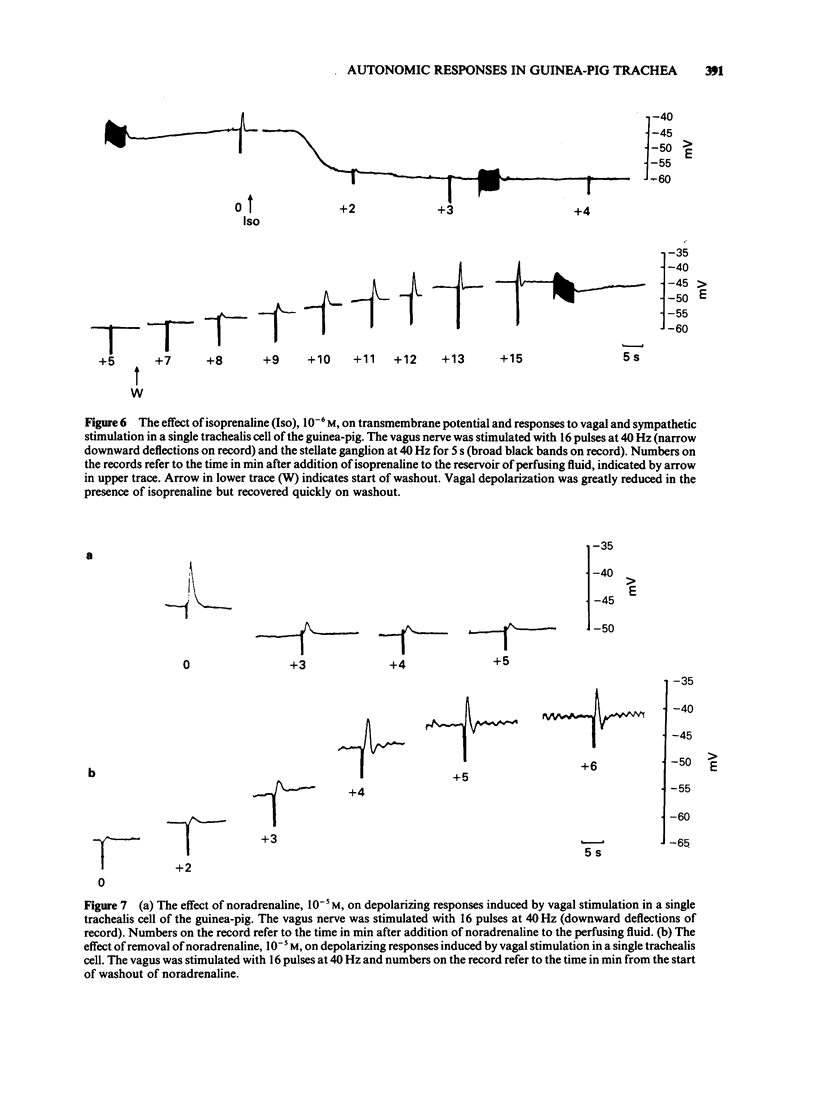
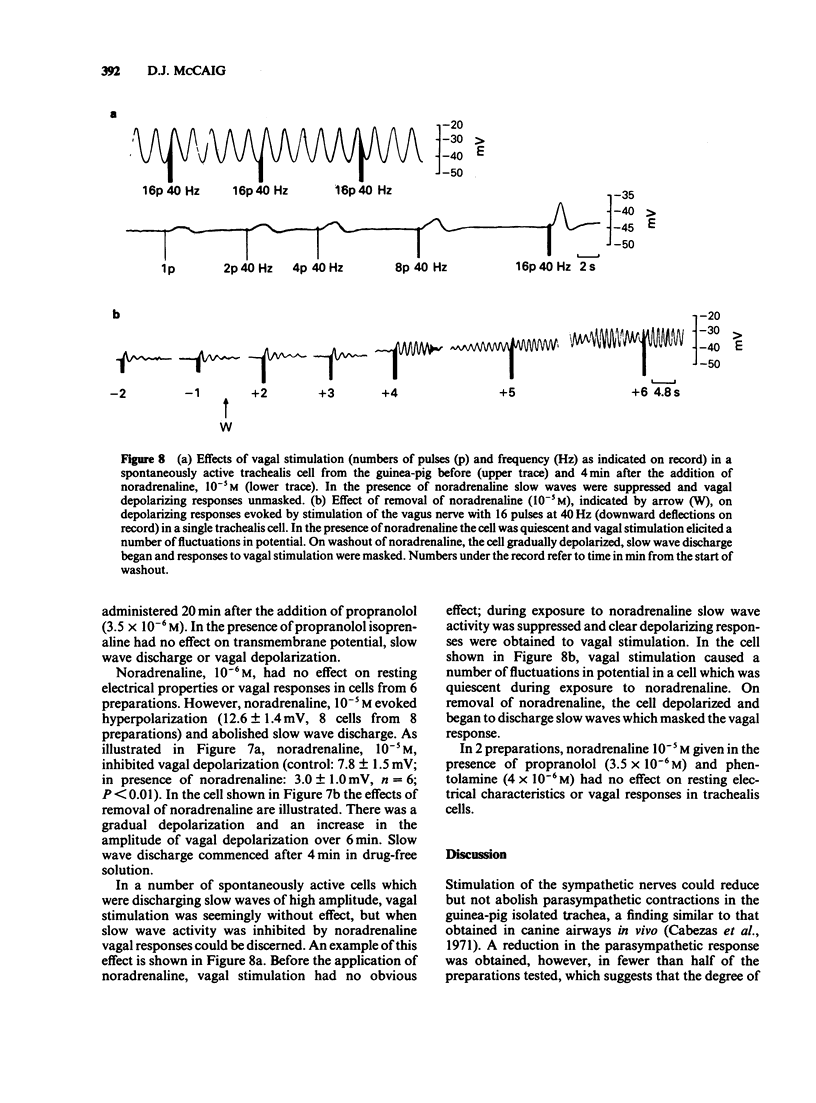
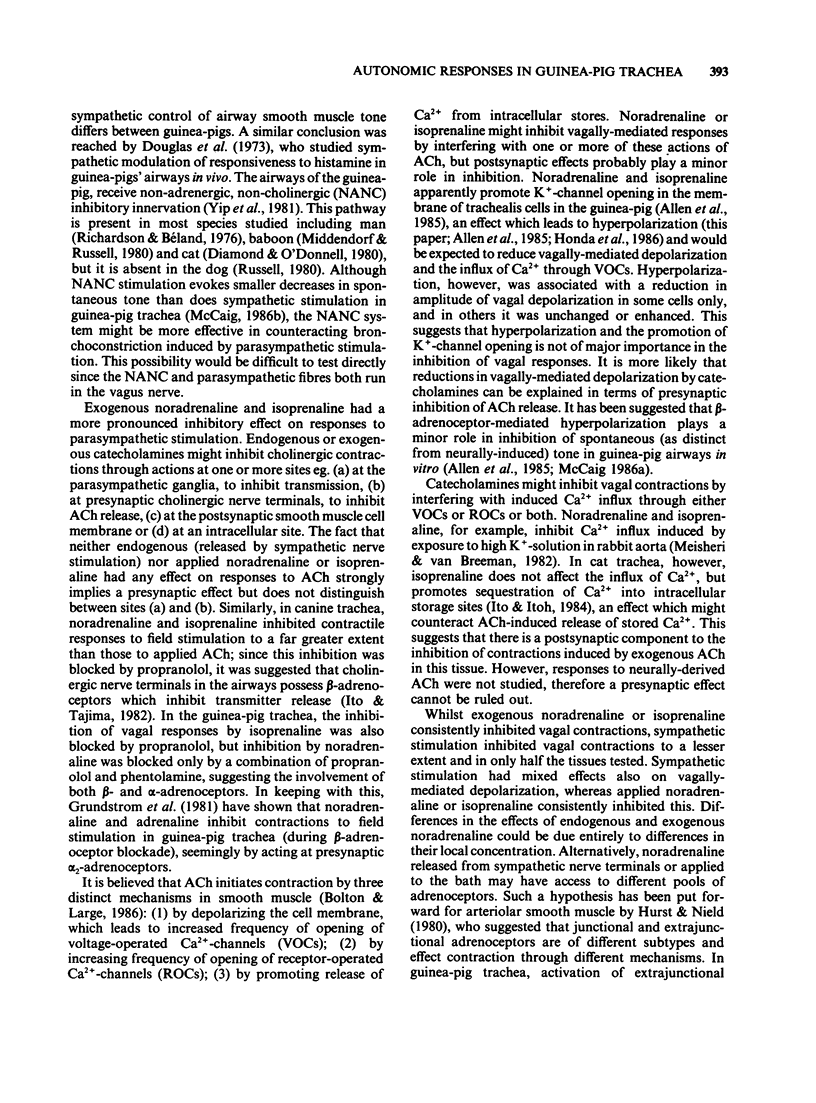
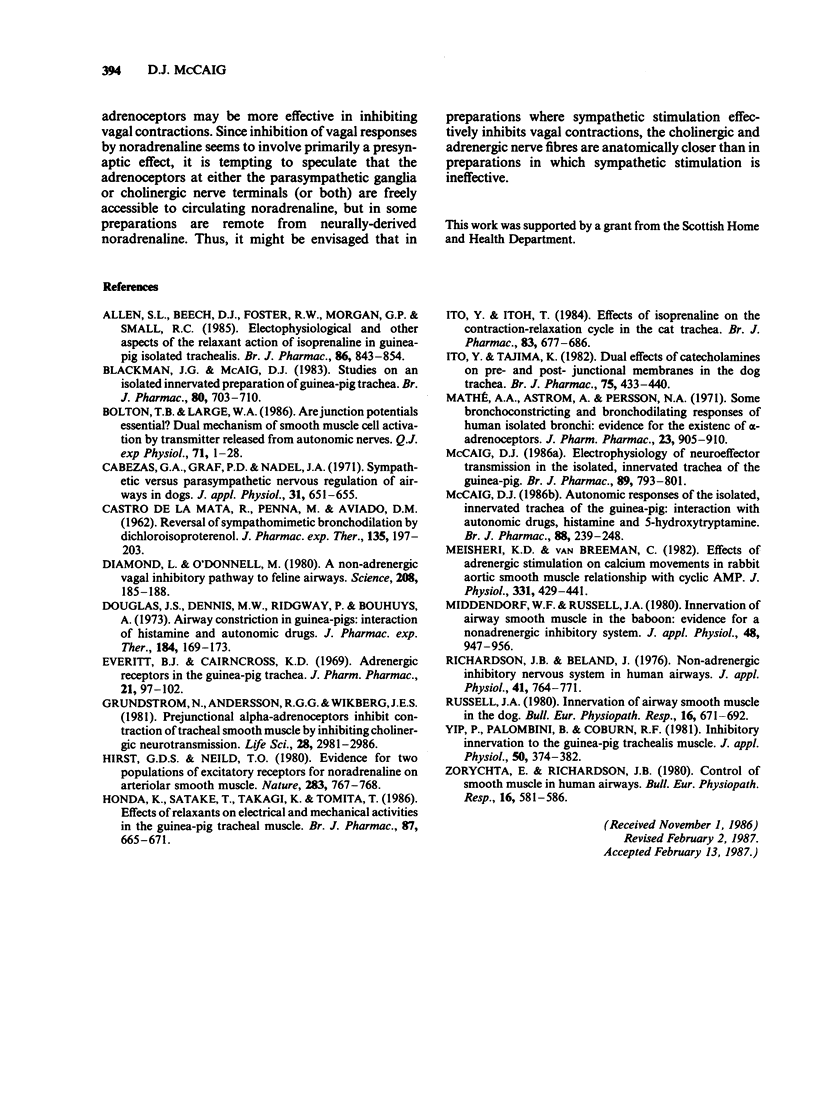
Selected References
These references are in PubMed. This may not be the complete list of references from this article.
- Allen S. L., Beech D. J., Foster R. W., Morgan G. P., Small R. C. Electrophysiological and other aspects of the relaxant action of isoprenaline in guinea-pig isolated trachealis. Br J Pharmacol. 1985 Dec;86(4):843–854. doi: 10.1111/j.1476-5381.1985.tb11106.x. [DOI] [PMC free article] [PubMed] [Google Scholar]
- Blackman J. G., McCaig D. J. Studies on an isolated innervated preparation of guinea-pig trachea. Br J Pharmacol. 1983 Dec;80(4):703–710. doi: 10.1111/j.1476-5381.1983.tb10061.x. [DOI] [PMC free article] [PubMed] [Google Scholar]
- Bolton T. B., Large W. A. Are junction potentials essential? Dual mechanism of smooth muscle cell activation by transmitter released from autonomic nerves. Q J Exp Physiol. 1986 Jan;71(1):1–28. doi: 10.1113/expphysiol.1986.sp002960. [DOI] [PubMed] [Google Scholar]
- Cabezas G. A., Graf P. D., Nadel J. A. Sympathetic versus parasympathetic nervous regulation of airways in dogs. J Appl Physiol. 1971 Nov;31(5):651–655. doi: 10.1152/jappl.1971.31.5.651. [DOI] [PubMed] [Google Scholar]
- DE LA MATA R. C., PENNA M., AVIADO D. M. Reversal of sympathomimetic bronchodilation by dichloroisoproterenol. J Pharmacol Exp Ther. 1962 Feb;135:197–203. [PubMed] [Google Scholar]
- Diamond L., O'Donnell M. A nonadrenergic vagal inhibitory pathway to feline airways. Science. 1980 Apr 11;208(4440):185–188. doi: 10.1126/science.7361114. [DOI] [PubMed] [Google Scholar]
- Douglas J. S., Dennis M. W., Ridgway P., Bouhuys A. Airway constriction in guinea pigs: interaction of histamine and autonomic drugs. J Pharmacol Exp Ther. 1973 Jan;184(1):169–179. [PubMed] [Google Scholar]
- Everitt B. J., Cairncross K. D. Adrenergic receptors in the guinea-pig trachea. J Pharm Pharmacol. 1969 Feb;21(2):97–102. doi: 10.1111/j.2042-7158.1969.tb08204.x. [DOI] [PubMed] [Google Scholar]
- Grundström N., Andersson R. G., Wikberg J. E. Prejunctional alpha 2 adrenoceptors inhibit contraction of tracheal smooth muscle by inhibiting cholinergic neurotransmission. Life Sci. 1981 Jun 29;28(26):2981–2986. doi: 10.1016/0024-3205(81)90275-7. [DOI] [PubMed] [Google Scholar]
- Hirst G. D., Neild T. O. Evidence for two populations of excitatory receptors for noradrenaline on arteriolar smooth muscle. Nature. 1980 Feb 21;283(5749):767–768. doi: 10.1038/283767a0. [DOI] [PubMed] [Google Scholar]
- Honda K., Satake T., Takagi K., Tomita T. Effects of relaxants on electrical and mechanical activities in the guinea-pig tracheal muscle. Br J Pharmacol. 1986 Apr;87(4):665–671. doi: 10.1111/j.1476-5381.1986.tb14583.x. [DOI] [PMC free article] [PubMed] [Google Scholar]
- Ito Y., Itoh T. Effects of isoprenaline on the contraction-relaxation cycle in the cat trachea. Br J Pharmacol. 1984 Nov;83(3):677–686. doi: 10.1111/j.1476-5381.1984.tb16221.x. [DOI] [PMC free article] [PubMed] [Google Scholar]
- Ito Y., Tajima K. Dual effects of catecholamines on pre- and post-junctional membranes in the dog trachea. Br J Pharmacol. 1982 Mar;75(3):433–440. doi: 10.1111/j.1476-5381.1982.tb09158.x. [DOI] [PMC free article] [PubMed] [Google Scholar]
- Mathé A. A., Aström A., Persson N. A. Some bronchoconstricting and bronchodilating responses of human isolated bronchi: evidence for the existence of -adrenoceptors. J Pharm Pharmacol. 1971 Dec;23(12):905–910. doi: 10.1111/j.2042-7158.1971.tb09891.x. [DOI] [PubMed] [Google Scholar]
- McCaig D. J. Autonomic responses of the isolated, innervated trachea of the guinea-pig: interaction with autonomic drugs, histamine and 5-hydroxytryptamine. Br J Pharmacol. 1986 May;88(1):239–248. doi: 10.1111/j.1476-5381.1986.tb09492.x. [DOI] [PMC free article] [PubMed] [Google Scholar]
- McCaig D. J. Electrophysiology of neuroeffector transmission in the isolated, innervated trachea of the guinea-pig. Br J Pharmacol. 1986 Dec;89(4):793–801. doi: 10.1111/j.1476-5381.1986.tb11184.x. [DOI] [PMC free article] [PubMed] [Google Scholar]
- Meisheri K. D., van Breemen C. Effects of beta-adrenergic stimulation on calcium movements in rabbit aortic smooth muscle: relationship with cyclic AMP. J Physiol. 1982 Oct;331:429–441. doi: 10.1113/jphysiol.1982.sp014380. [DOI] [PMC free article] [PubMed] [Google Scholar]
- Middendorf W. F., Russell J. A. Innervation of airway smooth muscle in the baboon: evidence for a nonadrenergic inhibitory system. J Appl Physiol Respir Environ Exerc Physiol. 1980 Jun;48(6):947–956. doi: 10.1152/jappl.1980.48.6.947. [DOI] [PubMed] [Google Scholar]
- Richardson J., Béland J. Nonadrenergic inhibitory nervous system in human airways. J Appl Physiol. 1976 Nov;41(5 Pt 1):764–771. doi: 10.1152/jappl.1976.41.5.764. [DOI] [PubMed] [Google Scholar]
- Russell J. A. Innervation of airway smooth muscle in the dog. Bull Eur Physiopathol Respir. 1980 Sep-Oct;16(5):671–692. [PubMed] [Google Scholar]
- Yip P., Palombini B., Coburn R. F. Inhibitory innervation to the guinea pig trachealis muscle. J Appl Physiol Respir Environ Exerc Physiol. 1981 Feb;50(2):374–382. doi: 10.1152/jappl.1981.50.2.374. [DOI] [PubMed] [Google Scholar]
- Zorychta E., Richardson J. B. Control of smooth muscle in human airways. Bull Eur Physiopathol Respir. 1980 Sep-Oct;16(5):581–586. [PubMed] [Google Scholar]


